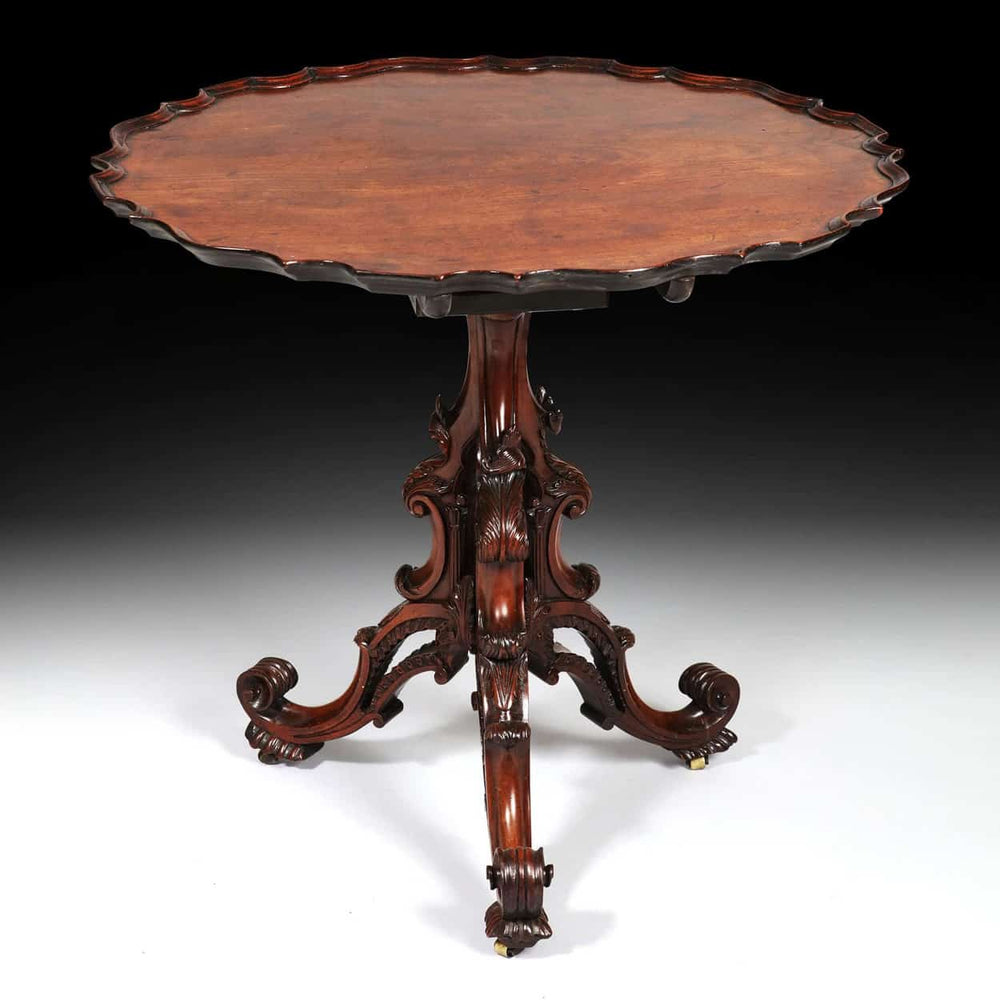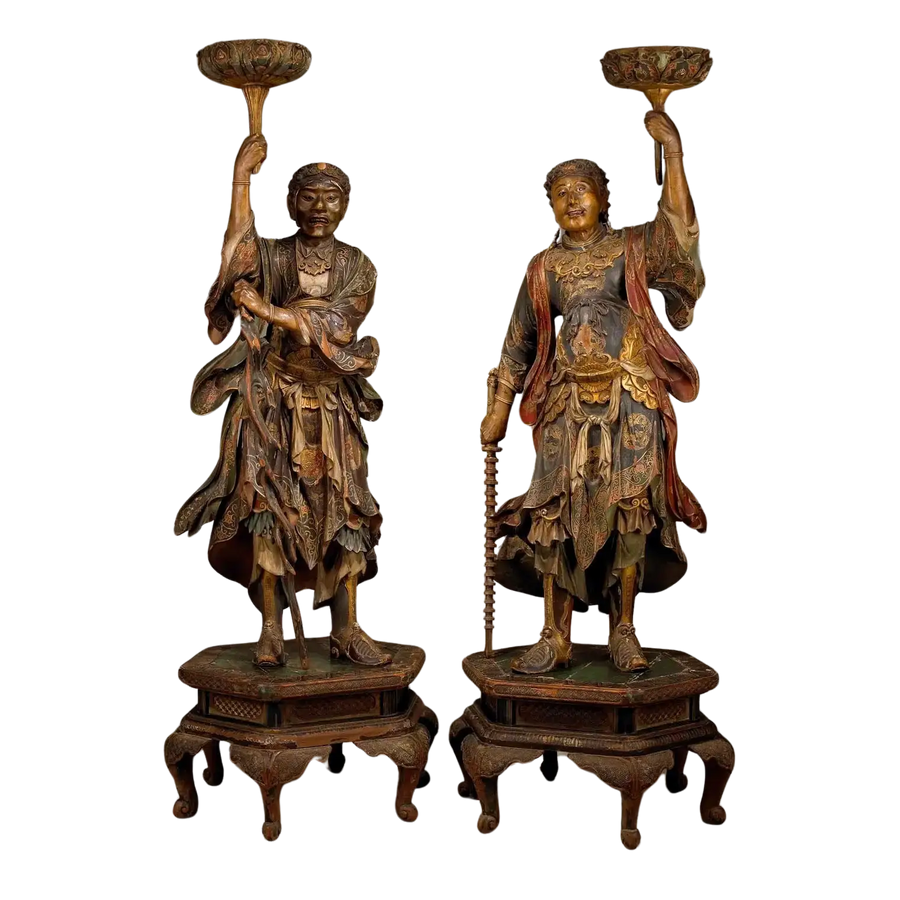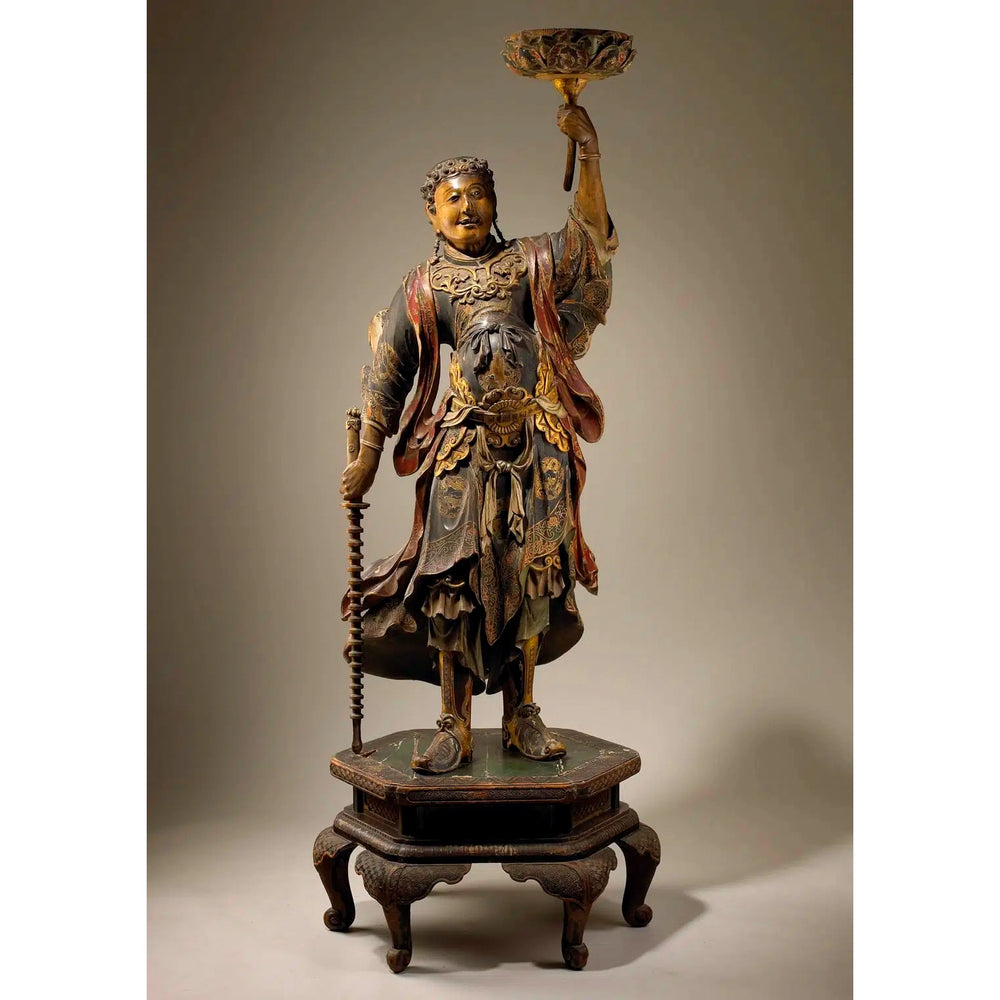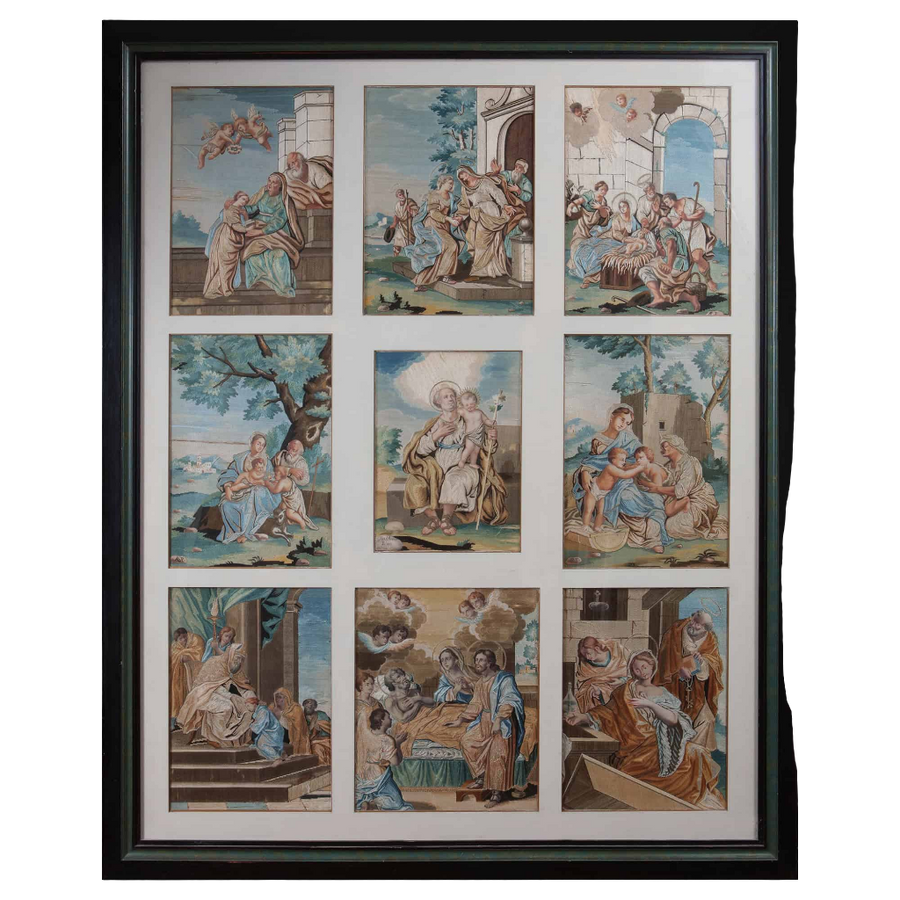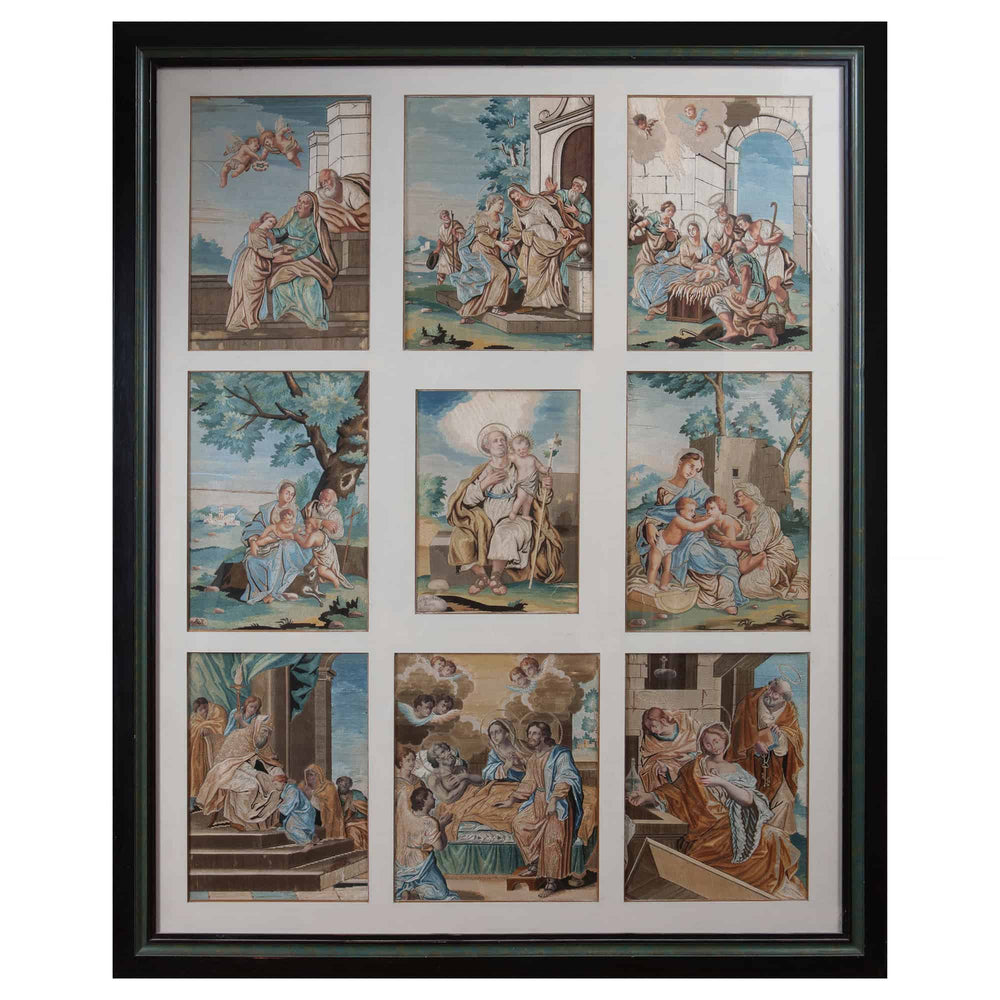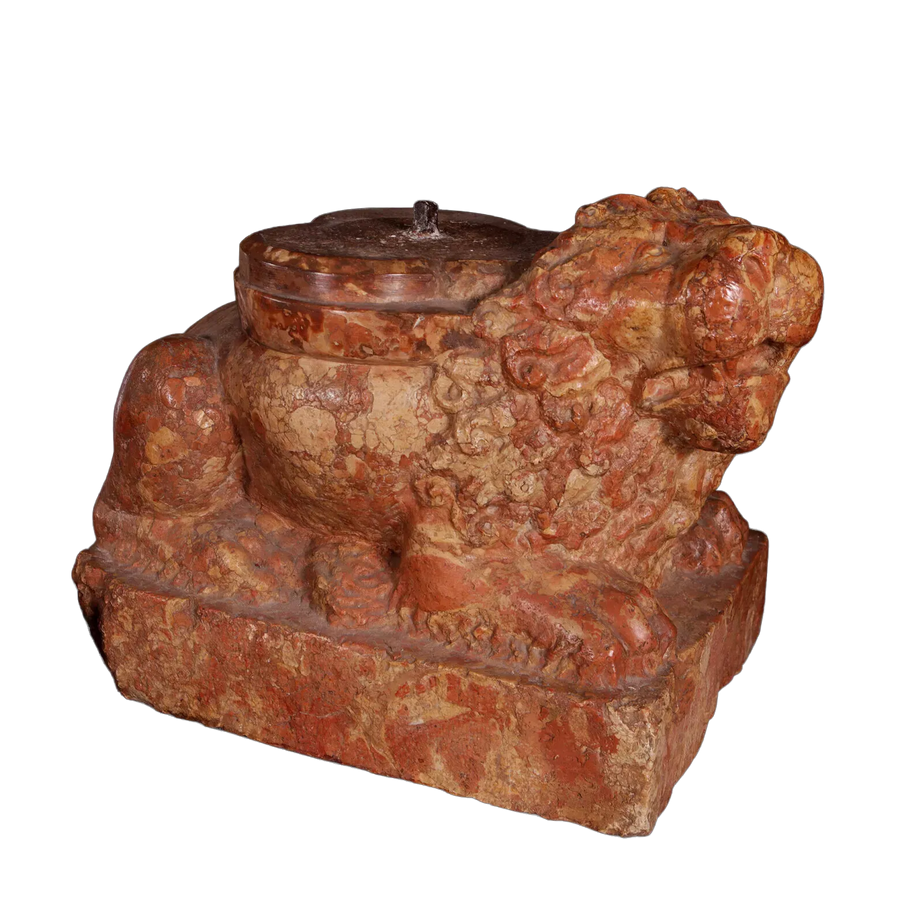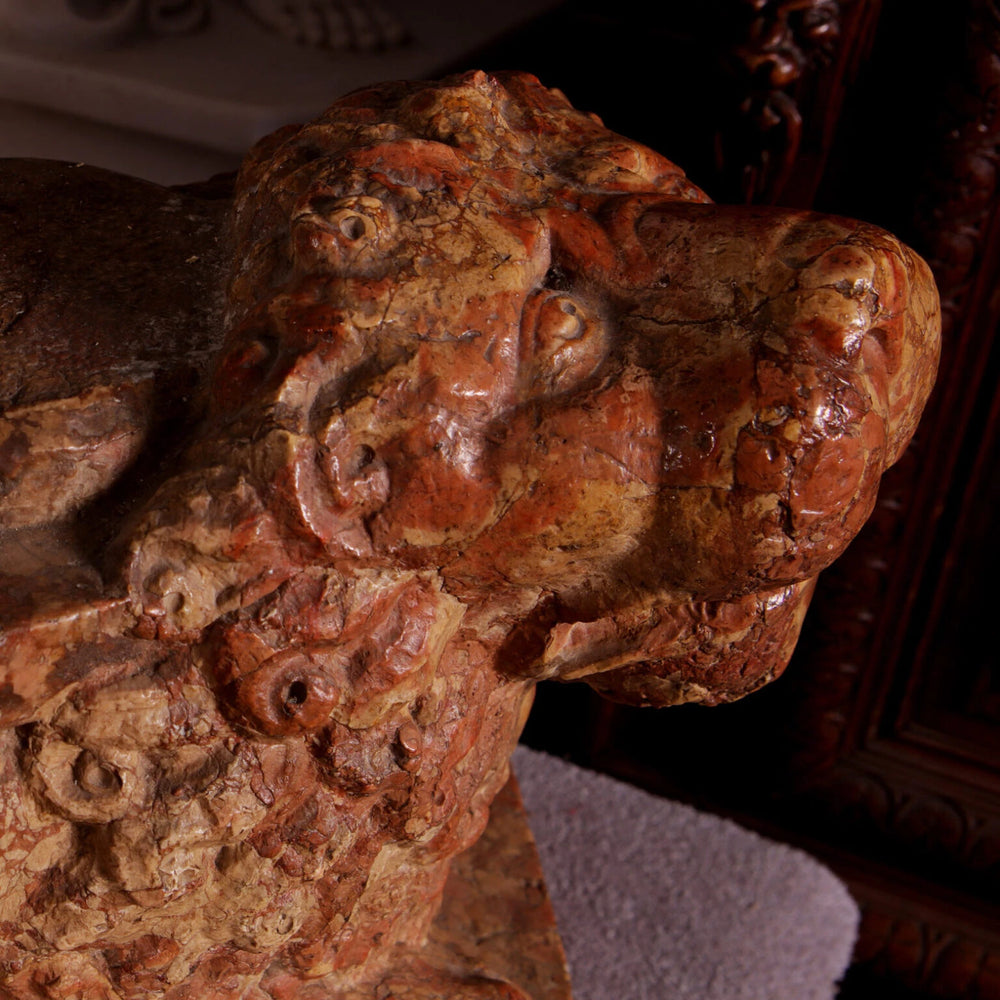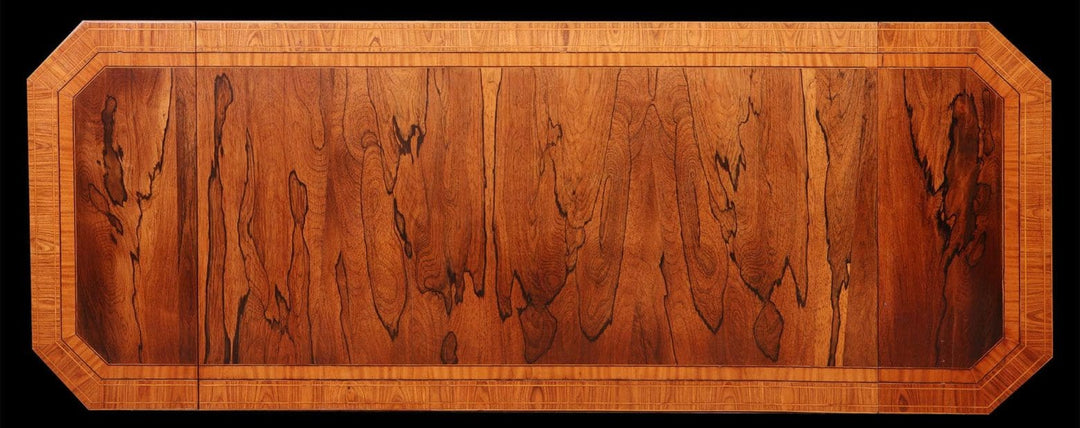Christianity has profoundly influenced the decorative arts, particularly through Gothic and devotional art, leaving an indelible mark on various forms of religious artistic expression.
Gothic Art
Influences: Gothic art emerged in the 12th century and flourished during the High and Late Middle Ages. It evolved from Romanesque art and was heavily influenced by the desire to convey religious themes with greater emotional intensity and detail. The style was characterised by its verticality and emphasis on light, symbolising the divine.
Characteristics:
-
Architecture: Gothic cathedrals, such as Notre-Dame in Paris, are renowned for their towering spires, ribbed vaults, and flying buttresses. These elements not only supported the structure but also allowed for larger windows, often filled with intricate stained glass depicting biblical scenes.
-
Sculpture: Gothic sculpture is noted for its detailed and expressive figures, often adorning the facades of cathedrals. These sculptures included saints, angels, and scenes from the Bible, aimed at educating the largely illiterate population about Christian stories and teachings.
-
Manuscripts: Illuminated manuscripts from this period, such as the Book of Kells, featured elaborate illustrations and decorations that highlighted the sacred texts within.
Devotional Art
Influences: Devotional art, deeply rooted in Christian religious practices, was designed to inspire worship and contemplation. This style encompasses a wide range of mediums, including painting, sculpture, and decorative objects.
Characteristics:
-
Icons and Altarpieces: Devotional art often included icons and altarpieces depicting Christ, the Virgin Mary, and saints. These pieces were central to both private devotion and public worship. The use of gold leaf and vivid colors was common to signify the holiness of the figures.
-
Reliquaries: These were elaborate containers used to house relics of saints. Crafted from precious metals and adorned with jewels, reliquaries were not only objects of veneration but also displays of artistic skill and religious devotion.
-
Paintings: Renaissance artists like Leonardo da Vinci and Michelangelo contributed to devotional art with masterpieces such as "The Last Supper" and the Sistine Chapel ceiling. These works are celebrated for their technical brilliance and profound spiritual impact.
Usage and Significance
Liturgical and Educational Purposes: Christian decorative arts were used extensively in churches, cathedrals, and monasteries. These artworks served liturgical functions, enhancing the sacred atmosphere of religious spaces and aiding in the celebration of the sacraments.
Moral and Didactic Roles: Artworks depicted biblical stories and saints' lives, educating the faithful and promoting Christian virtues. They were visual sermons that communicated complex theological concepts in an accessible manner.
Expression of Piety and Power: Both Gothic and devotional art reflected the piety of patrons and the Church's power. Wealthy individuals and religious institutions commissioned these artworks to demonstrate their devotion and reinforce their status within the Christian community.
Examples from Nicholas Wells Antiques
Nicholas Wells Antiques showcases a variety of religious art pieces, including Gothic sculptures and devotional items. Their collection highlights the intricate craftsmanship and spiritual significance of these artworks. Items such as stained glass windows, carved altarpieces, and illuminated manuscripts exemplify the beauty and depth of Christian decorative arts.
Christianity has profoundly influenced the decorative arts, particularly through Gothic and devotional art, leaving an indelible mark on various forms of religious artistic expression.
Gothic Art
Influences: Gothic art emerged in the 12th century and flourished during the High and Late Middle Ages. It evolved from Romanesque art and was heavily influenced by the desire to convey religious themes with greater emotional intensity and detail. The style was characterised by its verticality and emphasis on light, symbolising the divine.
Characteristics:
-
Architecture: Gothic cathedrals, such as Notre-Dame in Paris, are renowned for their towering spires, ribbed vaults, and flying buttresses. These elements not only supported the structure but also allowed for larger windows, often filled with intricate stained glass depicting biblical scenes.
-
Sculpture: Gothic sculpture is noted for its detailed and expressive figures, often adorning the facades of cathedrals. These sculptures included saints, angels, and scenes from the Bible, aimed at educating the largely illiterate population about Christian stories and teachings.
-
Manuscripts: Illuminated manuscripts from this period, such as the Book of Kells, featured elaborate illustrations and decorations that highlighted the sacred texts within.
Devotional Art
Influences: Devotional art, deeply rooted in Christian religious practices, was designed to inspire worship and contemplation. This style encompasses a wide range of mediums, including painting, sculpture, and decorative objects.
Characteristics:
-
Icons and Altarpieces: Devotional art often included icons and altarpieces depicting Christ, the Virgin Mary, and saints. These pieces were central to both private devotion and public worship. The use of gold leaf and vivid colors was common to signify the holiness of the figures.
-
Reliquaries: These were elaborate containers used to house relics of saints. Crafted from precious metals and adorned with jewels, reliquaries were not only objects of veneration but also displays of artistic skill and religious devotion.
-
Paintings: Renaissance artists like Leonardo da Vinci and Michelangelo contributed to devotional art with masterpieces such as "The Last Supper" and the Sistine Chapel ceiling. These works are celebrated for their technical brilliance and profound spiritual impact.
Usage and Significance
Liturgical and Educational Purposes: Christian decorative arts were used extensively in churches, cathedrals, and monasteries. These artworks served liturgical functions, enhancing the sacred atmosphere of religious spaces and aiding in the celebration of the sacraments.
Moral and Didactic Roles: Artworks depicted biblical stories and saints' lives, educating the faithful and promoting Christian virtues. They were visual sermons that communicated complex theological concepts in an accessible manner.
Expression of Piety and Power: Both Gothic and devotional art reflected the piety of patrons and the Church's power. Wealthy individuals and religious institutions commissioned these artworks to demonstrate their devotion and reinforce their status within the Christian community.
Examples from Nicholas Wells Antiques
Nicholas Wells Antiques showcases a variety of religious art pieces, including Gothic sculptures and devotional items. Their collection highlights the intricate craftsmanship and spiritual significance of these artworks. Items such as stained glass windows, carved altarpieces, and illuminated manuscripts exemplify the beauty and depth of Christian decorative arts.






